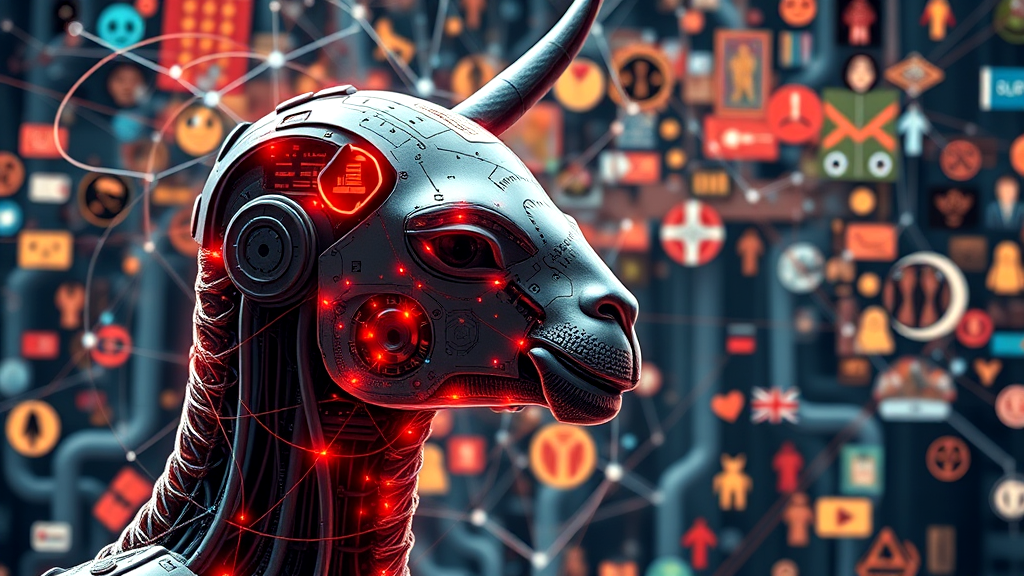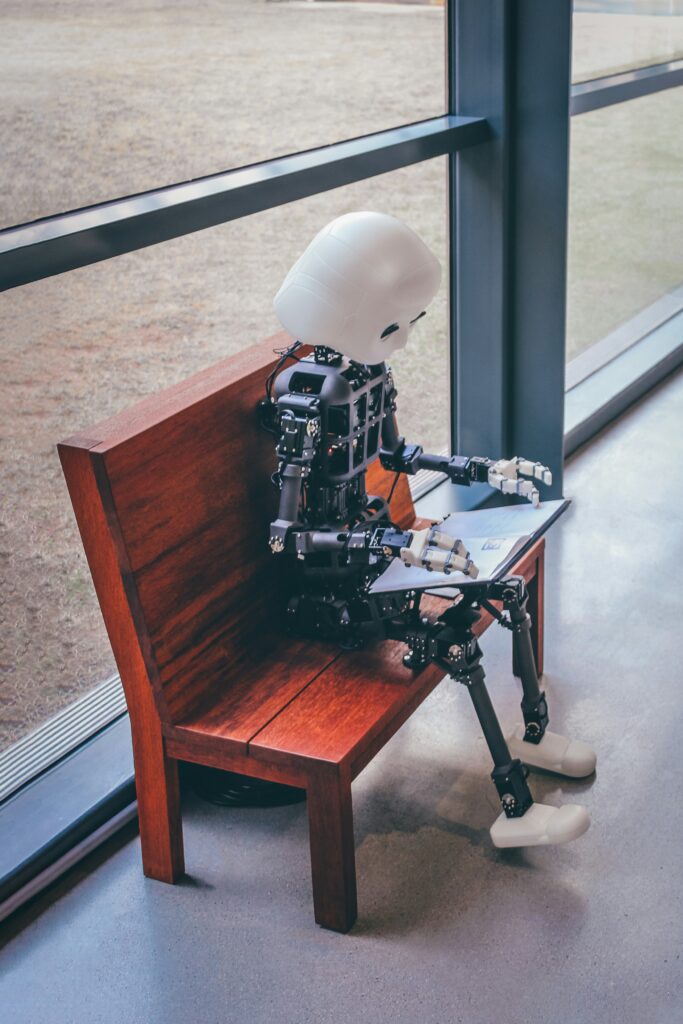Understanding Translation in AI Models
Exploring how AI models grasp translation unveils a tapestry of challenges and breakthroughs. Multimodal emotion recognition is one area where AI models, like the Emotion-LLaMA model, are breaking barriers. Emotional subtleties often slip through the cracks with conventional translation methods. The emotion-llama model, however, integrates audio and visual data to decode these nuances. Cultural competence training is pivotal, especially when dealing with idioms that don’t translate well across cultures. It’s fascinating how emotion reasoning can enhance this process. The emotional state of individuals can be captured more accurately with advanced emotion recognition models, filling gaps seen in previous generations of AI. Emotional state detection is being fine-tuned, yet capturing every micro-expression remains challenging. I’m hopeful that with further innovation, we’ll witness postsubscript peak end improvements in AI’s translation capability.
| Aspect | Challenge | Model | Improvement |
|---|---|---|---|
| Emotion Recognition | Audio Processing | Emotion-LLaMA | Enhanced Accuracy |
| Cultural Nuances | Idiom Translation | GPT-4V | Better Understanding |
| Emotional Subtleties | Detecting Micro-Expressions | Emotion-LLaMA | Robust Reasoning |
| Multimodal Data | Integration | Emotion-LLaMA | Comprehensive Analysis |
| Emotional State | Detection | GPT-4V | Improved Sensitivity |

Emotional Subtleties in Language
The subtle emotional nuances woven into language pose challenges for translation. MLLMs often miss these intricate details, leading to misinterpretations. Ensuring that AI can grasp such subtleties is crucial. I’ve noticed how translation models sometimes falter, especially when tasked with capturing the emotional layers embedded in idioms and phrases. The Emotion-LLaMA Model represents a leap forward, blending audio, visual, and text data to enhance emotional understanding. However, even with such advancements, capturing the full spectrum of emotions during translation remains a challenge. Cultural context matters immensely, influencing how emotions are expressed and interpreted.
| Translation Challenge | Model Example | Emotion Aspect | Impact on Translation |
|---|---|---|---|
| Subtle Emotional Nuances | MLLMs | Missed Details | Misinterpretation |
| Idioms and Phrases | Emotion-LLaMA Model | Cultural Layers | Enhanced Accuracy |
| Audio-Visual Integration | GPT-4V | Emotional Data | Improved Sensitivity |
| Cultural Influences | MLLMs | Expression | Varied Interpretations |
| Emotion Recognition Models | Emotion-LLaMA Model | State Detection | Robust Reasoning |
The great acceleration in AI highlights the urgency to refine these models, as explored here.

Cultural Idioms and Their Importance
Exploring the significance of cultural idioms is like finding hidden treasures in translation. These idioms carry emotional weight that can change meanings if misunderstood. It’s like trying to catch a fish with your bare hands—slippery and elusive. I’ve noticed that translation models often miss these nuances, leading to hilarious or awkward results.
Imagine translating “kick the bucket” literally. In translation, these idioms require the AI to tap into cultural competence. The Emotion-LLaMA model has made strides here. By integrating multimodal inputs, it offers improved emotional state recognition, making translations more accurate.
The journey doesn’t end. Models must continue to refine their understanding of cultural nuances, ensuring our AI-glossary isn’t just a jumble of words, but a tapestry rich with meaning.
| Idiom Example | Literal Meaning | Cultural Meaning | Translation Challenge |
|---|---|---|---|
| Kick the bucket | Hit a bucket | Die | Misinterpretation |
| Piece of cake | Slice of dessert | Easy task | Cultural context |
| Cold feet | Cold extremities | Hesitation | Emotional nuance |
| Spill the beans | Drop legumes | Reveal secret | Figurative language |
| Break the ice | Shatter frozen water | Start conversation | Social cue |

Challenges in Multimodal Emotion Recognition
Addressing the hurdles in multimodal emotion recognition, it’s like baking a cake without the recipe. Emotional translation presents unique challenges, particularly when models like the Emotion-LLaMA model handle subtle cues. Understanding emotional nuances in language often requires a unique touch, especially when dealing with complex expressions.
- Translation Ambiguities: Emotional nuances can be lost, similar to playing broken telephone.
- Cultural Idioms: These are tricky, holding deep meanings that differ across regions.
- Audio-Visual Inputs: Current models face limitations in processing and synthesizing these signals.
- Cultural Competence: Training is crucial for models to understand diverse emotional expressions.
- Micro-Expressions: Detecting these requires sharp observation, akin to spotting a needle in a haystack.
- Emotional State Recognition: Models sometimes miss the subtle shifts in emotional states.
- Multimodal Emotion Reasoning: Integrating data forms enhances understanding yet remains intricate.

Emotion Recognition Models Examined
Examining emotion recognition models reveals key insights into the challenges of translating emotions. The Emotion-LLaMA model stands out. It integrates audio, visual, and textual inputs, tackling the complexity of emotional translation. Yet, models like GPT-4V still grapple with processing audio cues and detecting those pesky micro-expressions.
Cultural idioms further complicate things. Getting these right is crucial for effective translation. This reminds me of a time when I thought “kick the bucket” meant actually kicking a bucket—lesson learned!
When training models, understanding emotional subtleties is like finding a needle in a haystack. Training efforts must ensure cultural competence, enhancing cross-cultural interactions. Consider the impact of cultural competence training.
Here’s a quick table on translation and emotion recognition:
| Model/Aspect | Strengths | Challenges | Relevance |
|---|---|---|---|
| Emotion-LLaMA | Multimodal data integration | Subtle emotional cues | High |
| GPT-4V | Textual analysis | Audio and micro-expressions | Medium |
| Cultural Idioms | Cultural depth | Misinterpretation risks | Essential |
| Emotional Nuances | Enhances empathy | Complexity in translation | Critical |
| Cultural Competence | Cross-cultural understanding | Training requirements | High |
Gudykunst and Nishida discussed the nuances of communication across cultures here.

Emotional State Detection Limitations
Considering the challenges of detecting an emotional state, it’s like trying to catch smoke with a net. It’s tricky for AI models, like the Emotion-LLaMA model, to decode subtle emotional cues, particularly when audio and visuals are involved. There’s a notable gap when it comes to processing emotional nuances. It feels like trying to paint a masterpiece with a limited color palette. The ability to translate these subtle emotions accurately into different languages remains a challenge. Models often stumble over cultural idioms. These can be a real head-scratcher, as their emotional weight varies greatly across cultures. For those interested in more technical details, the QWen-Audio model provides more insights into these AI translation nuances here. This journey toward more reliable emotional translation is ongoing, with room for improvement.
| Aspect | Challenge | Example Models | Impact |
|---|---|---|---|
| Audio Processing | Limited cue detection | GPT-4V | Missed cues |
| Micro-expressions | Hard to detect | Emotion-LLaMA | Inaccuracy |
| Cultural Idioms | Misinterpretation | Emotion-LLaMA | Confusion |
| Translation Nuances | Emotional subtleties | QWen-Audio | Loss of meaning |
| Multimodal Inputs | Integration complexity | Emotion-LLaMA | Data gaps |

The Role of Emotion-LLaMA Model
The emotion-llama model plays a fascinating part in translation, navigating the tricky waters of emotional subtleties. This model is like a detective, deciphering not just words but the feelings tucked between lines. By recognizing micro-expressions and audio cues, it steps up its game in understanding the emotional state of communication.
Table: Emotional Translation and Recognition
| Aspect | Emotion-LLaMA Role | Translation Impact | Challenge |
|---|---|---|---|
| Micro-expressions | Enhanced Detection | Accurate Translation | Complexity |
| Audio Cues | Improved Recognition | Emotional Nuance | Integration |
| Cultural Idioms | Accurate Interpretation | Cultural Competence | Misinterpretation |
| Emotional Subtleties | Nuanced Understanding | Emotional State | Ambiguity |
| Multimodal Inputs | Comprehensive Analysis | Emotion Reasoning | Data Gaps |
- Emotion-LLaMA refines emotional state detection.
- It transforms translation accuracy.
- There’s improvement in multimodal emotion recognition.
- Cultural competence training is integrated.
- Postsubscript peak end effect is considered.
- Emotional reasoning is enhanced.
- The ai-glossary is enriched.
- Cultural competence becomes a focus.
Training Emotion-LLaMA: Key Strategies
The strategies for training the Emotion-LLaMA model involve a fascinating interplay of multimodal data and emotional nuances. I aim to refine its emotional state detection by diving into multimodal emotion reasoning. This requires a delicate balance, like juggling flaming torches without burning my fingers. Emotion-LLaMA’s training cleverly uses emotion-specific encoders, enhancing its ability to grasp subtle micro-expressions and cultural idioms. This is akin to deciphering a complex code with hidden emotional layers.
The inclusion of cultural competence is crucial to accurately interpret these emotional cues. I find that recognizing the emotional state across cultures demands cultural competence training, which adds depth to translations. This is not just about translating words but capturing the heartbeat of emotions. By focusing on these strategies, the Emotion-LLaMA model emerges as a robust contender in the realm of AI translation, paving new paths in understanding emotional intricacies.
Comparing State-of-the-Art Methods
Exploring the latest techniques reveals intriguing aspects of translation within AI models. The Emotion-LLaMA model stands out by using emotion-specific encoders in its training. This approach advances its emotional state detection, allowing it to navigate cultural idioms with finesse. It’s like cracking a code with emotional layers.
In contrast, models like GPT-4V stumble with audio cues and subtle expressions. The challenge lies in aligning the emotional nuances across languages, demanding cultural insights. This is where multimodal emotion reasoning shines, balancing different data types to enhance understanding.
While some models excel at textual analysis, others incorporate visual and audio cues for a fuller picture. It’s like piecing together a puzzle with missing parts. This process is crucial for translating emotions accurately, ensuring the models grasp the underlying sentiment. By embracing these diverse approaches, the Emotion-LLaMA model emerges as a leader in multimodal emotion recognition.
Multimodal Emotion Recognition Benchmarking
In the realm of evaluating emotion recognition, the Emotion-LLaMA model is the frontrunner. It integrates audio, visual, and text inputs, enhancing its ability to capture an emotional state. However, challenges persist. The complexity of emotional translation is like solving a Rubik’s Cube in the dark. Language models often falter with subtle facial cues and cultural idioms, which can cause misinterpretation. This is where cultural competence training comes into play, ensuring models are not lost in translation. As models like Emotion-LLaMA improve, we edge closer to AI that can truly understand emotions. It’s fascinating, isn’t it? The journey continues. For those interested in exploring how cultural nuances affect communication, Goodreads offers a plethora of resources. Through continuous refinement, models will better grasp the intricate dance of human emotions, making strides towards perfecting emotional state interpretation.
Cultural Competence in Translation
Cultural sensitivity in translation becomes a game-changer when navigating emotional nuances. The task of capturing the emotional state within language requires a deft touch, like catching butterflies with a net. The Emotion-LLaMA model shows promise by integrating audio, visual, and textual inputs, enhancing its emotional reasoning prowess. Yet, cultural idioms present a tough nut to crack, demanding a deeper cultural competence.
Emotion recognition algorithms strive to decode these complexities, often stumbling over untranslatable expressions. Training in cultural competence is crucial, refining emotional state detection and bridging cultural gaps. It’s like teaching a robot to feel and understand human subtleties. As AI evolves, models better grasp the nuanced dance of emotions, paving the way for empathetic interactions. Understanding cultural influences on communication is crucial for progress, as researchers have shown here.
| Aspect | Challenge | Solution | Importance |
|---|---|---|---|
| Cultural Idioms | Misinterpretation | Cultural competence | High |
| Emotional Subtleties | Overlooked by models | Emotion-LLaMA integration | Critical |
| Multimodal Inputs | Incomplete data interpretation | Comprehensive understanding | Essential |
| Emotional State Detection | Subtle expressions | Enhanced algorithms | Crucial |
| AI Model Training | Cultural biases | Competence training | Indispensable |
Cultural Competence Training Essentials
Mastering the essentials of cultural competence means recognizing how our own biases affect translation. My cultural blind spots can create misunderstandings. So, I need to be aware of how my own cultural competence influences my translations. It’s not just about language. It’s about understanding the emotional state behind words.
The Emotion-LLaMA model can be a game-changer here. It helps me grasp the emotional nuances embedded in different cultural contexts. This model’s ability to incorporate audio, visual, and text inputs offers a broader perspective on emotional state recognition.
I find that enhancing my skills in this area requires understanding both the technical and emotional aspects of translation. Multimodal emotion reasoning can significantly improve the translation process. By blending these skills, I’m better equipped to offer accurate and meaningful translations, even in the most challenging situations.
Dataset Construction for Emotion Recognition
Creating datasets for recognizing emotions is a balancing act. It’s a bit like cooking without a recipe—each ingredient matters. Gathering diverse emotional expressions? That’s the secret sauce. Including audio, visual, and textual inputs, like in the Emotion-LLaMA model, is crucial. Why? It captures the full spectrum of human emotion. Think of it as an art gallery of emotions, where each piece tells a unique tale.
When tackling emotional translations, understanding cultural idioms is key. They’re like hidden treasures, full of emotional weight. Missing them can change meanings entirely. I often find myself navigating these subtleties, trying to capture the essence of an emotional state. This deep dive into emotional subtleties is what makes the process both challenging and rewarding. It’s all about painting a vivid picture, one emotion at a time.
Instruction Collection for Multimodal Tasks
Navigating the complexities of instruction gathering for tasks involving multiple modes? It’s like assembling a jigsaw puzzle with pieces scattered all around. You need each piece to fit perfectly to achieve the big picture. For instance, understanding the nuances of an emotional state requires more than just words; it demands a keen eye for detail. With the Emotion-LLaMA model, we explore uncharted territories, blending emotion reasoning with diverse datasets. It’s like trying to capture the entire orchestra’s essence with a single note.
A critical aspect is cultural competence, which demands a deep dive into cultural nuances and biases. It’s like learning a new dance—awkward at first, but graceful once mastered. The goal is to elevate multimodal emotion recognition by honing in on the emotional subtleties, ensuring every emotion resonates authentically.
Challenges in Emotional Translation

The hurdles of translating emotions present a complex tapestry. Nuances in language can transform an emotional state, requiring more than just AI-glossary knowledge. I sometimes feel like a detective, piecing together emotional cues from context and culture. The Emotion-LLaMA model steps up, offering refined emotion reasoning and pushing the boundaries of what’s possible. Yet, gaps remain, especially in capturing the subtlety of emotions across different languages and cultural competence training plays a pivotal role here. It’s like trying to catch shadows—tricky but not impossible. Fine-tuning models to understand these layers is akin to teaching them to read between the lines. They need to grasp the postsubscript peak end of emotions. As we further explore multimodal emotion reasoning, the emotional state becomes a puzzle, waiting to be solved, piece by piece.
Ambiguity and Emotional Complexity
Ambiguities and the complexity of emotions often trip up translation models. It’s like trying to catch smoke with a net. The Emotion-LLaMA model pushes boundaries, yet it stumbles over micro-expressions and nuances. These are the silent whispers that add depth to language, the unspoken poetry of human interaction. I often find myself pondering the missing links in these models, especially when dealing with an emotional state that’s more than just text or sound.
These machines need cultural wisdom, something akin to dancing salsa without stepping on toes. Emotion reasoning is not just about understanding; it’s feeling. The quest for effective multimodal emotion reasoning is like assembling a jigsaw puzzle in the dark. Yet, each piece brings us closer to bridging the emotional chasm. What about the AI-glossary? It’s a toolkit, but not a magic wand.
Cultural and Social Nuances
Diving into the subtleties of culture and society reveals the challenges of translation. Picture this: every language is a unique tapestry of idioms and expressions, reflecting its culture. If you’ve ever tried translating a joke or idiom, you know the confusion that can follow. Emotional states hide in these linguistic corners, too. I often find myself unraveling these complexities, feeling like an emotional archaeologist.
The Emotion-LLaMA model shines here, navigating these cultural labyrinths better than most. Yet, something is always lost without grasping the deeper layers of human interaction. It’s like trying to paint a sunset with a black-and-white palette. AI-glossary references help, but they’re no substitute for real understanding. This is where cultural competence training comes into play, ensuring our AI doesn’t just speak the language but truly understands its soul.
Advances in Emotion Recognition Algorithms
The progression in algorithms for recognizing emotions within AI models is a fascinating journey. I see the growing need for better translation capabilities in these systems. It’s like trying to capture a rainbow with a black-and-white camera. We need models that understand the emotional hues in language. The Emotion-LLaMA model steps up by integrating multimodal inputs, setting a benchmark in accuracy. Yet, even the best models can stumble over cultural idioms, which carry layers of meaning. It’s like trying to translate a joke—sometimes, the punchline just doesn’t land right. To address this, researchers need to focus on training that emphasizes cultural competence training, which increases awareness of cultural biases. This is crucial for bridging the gap between mere translation and true understanding.
| Algorithm Feature | Emotion-LLaMA Strength | Multimodal Input | Translation Challenge |
|---|---|---|---|
| Audio Processing | High | Yes | Micro-expressions |
| Visual Analysis | Superior | Yes | Idiomatic Phrases |
| Textual Cues | Advanced | Yes | Emotional Nuance |
| Cultural Nuance | Moderate | Yes | Accurate Interpretation |
Integrating Multimodal Data for Accuracy
Improving accuracy in emotional translations involves weaving together diverse data forms. Picture this: you’re translating a heartfelt conversation that includes audio, video, and text. Each mode captures distinct emotional cues, like tone in voice or nuances in facial expressions. The Emotion-LLaMA Model boasts impressive capabilities here. It bridges the emotional gaps by processing multiple data streams, leading to more precise translations.
Yet, challenges persist. Emotional states can shift, adding layers of complexity. I often find that understanding cultural idioms is critical. They pack emotion and culture into a few words. Without proper training, models can misinterpret these, leading to mistranslations.
| Data Type | Priority Level | Emotion Detection | Cultural Significance |
|---|---|---|---|
| Audio | High | Yes | Moderate |
| Visual | Medium | Yes | High |
| Text | Low | No | High |
| Idioms | High | Yes | Very High |




